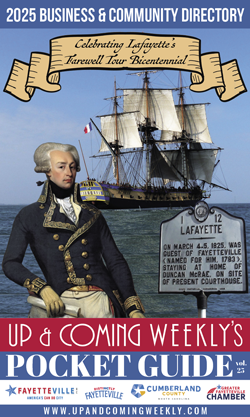 “In southeastern North Carolina, amongst the pines, swamps, and dark waters of the Lumbee River, you will find the heart and homeland of the Lumbee People. The ancestors of the Lumbee came together in the shelter of this land hundreds of years ago - survivors of tribal nations from the Algonquian, Iroquoian, and Siouan language families, including the Hatteras, the Tuscarora, and the Cheraw.” (from https://www.lumbeetribe.com/history-and-culture) The rich culture of the Lumbee Tribe is a part of the fabric of this region of North Carolina and has been for centuries. This culture - music and dance, the stories, the clothing and jewelry, the traditions handed down for generations-is preserved and shared by The UNC Pembroke American Indian Heritage Center and the Museum of the Southeast American Indian.
“In southeastern North Carolina, amongst the pines, swamps, and dark waters of the Lumbee River, you will find the heart and homeland of the Lumbee People. The ancestors of the Lumbee came together in the shelter of this land hundreds of years ago - survivors of tribal nations from the Algonquian, Iroquoian, and Siouan language families, including the Hatteras, the Tuscarora, and the Cheraw.” (from https://www.lumbeetribe.com/history-and-culture) The rich culture of the Lumbee Tribe is a part of the fabric of this region of North Carolina and has been for centuries. This culture - music and dance, the stories, the clothing and jewelry, the traditions handed down for generations-is preserved and shared by The UNC Pembroke American Indian Heritage Center and the Museum of the Southeast American Indian.
North Carolina has the highest American Indian population east of the Mississippi River, and the Lumbee Tribe is the 9th largest tribe in the nation, out of more than 500 different tribes. The Lumbee people are known as the People of the Dark Water, so-called because of the dark waters of the Lumbee River. Their tribal lands span the areas now known as Robeson, Hoke, Scotland, and Cumberland Counties, one of the largest geographical areas of tribal land in the region.
In honor of American Indian Heritage Month in November, the American Indian Heritage Center will present The Lumbee Tribe Cultural Showcase at Givens Performing Arts Center on Nov. 7. During two performances, students in kindergarten through 8th grade from Robeson and surrounding counties will see performances of traditional dances, people wearing traditional clothing, jewelry, and headdresses, telling stories significant to the Lumbee tribe. However, they will also learn about the significance of those aspects of the Lumbee culture. Hosted by John Oxendine of the Lumbee Tribe, students will learn why these pieces of the Lumbee culture are important, and what they mean to the people who perform them as well as to those who see and hear them.
Tribe members will perform many kinds of dances: fancy shawl dance, shuffle dance, war dance, Woodland style dances, and more.
One type of dance that students will see is called a jingle dance. Jingle dances originated with the Ojibwa tribe in the early part of the 20th century. In these dances, young women wear a jingle dress: a dress that has multiple rows of metal cones that make a jingling sound as the women dance. It is believed that this sound drives away sickness and that jingle dances are dances of healing. The dances are accompanied by drums and singing.
The significance of the drums used in these performances is also an important part of what the audience will learn at the showcase. The drums are more than just musical accompaniment for the dancing. For example, is believed that the water drum, called this because it is hollowed out and has water in it, was given to the Lumbee’s ancestors by animals to help drive away sadness and depression.
Headdresses are another important part of the Lumbee culture. Tribe members wear various different types of feathered headdresses and there is an explanation of the meaning and significance of those pieces: how they became part of the Lumbee culture, what they signify, and how it is believed that they affect the people who wear them.
It is believed by many American Indians, including the Lumbee people, that thunderstorms were to be respected and revered. Tradition dictates during a thunderstorm, you should be quiet and respectful, not talking, laughing, playing music or even cooking or taking a shower. Aspects of the Lumbee culture and traditions such as these are part of what is shared in the Cultural Showcase program.
The showcase will also talk about the history of the Lumbee people, and the history of struggles among American Indians. Host John Oxendine explains that in the not-too-distant past, the dances that are such a significant part of Lumbee culture and spiritual beliefs were not legal to perform. Until the passage of the American Indian Religious Freedom Act was passed in 1978, fines could be imposed for the performance of these dances.
These elements, and many others, will make up the Nov. 7 event at Givens Performing Arts Center. While this event is specifically for invited audiences made up of elementary and middle school-aged children, it is just one event produced by the American Indian Heritage Center in Lumberton, NC. This organization provides “cultural, social and academic program[s] for American Indian students as well as educational programming for non-Native faculty, staff, and students.” (https://www.uncp.edu/academics/american-indian-heritage-center)
(The Lumbee Tribe Cultural Showcase will help to teach students about the Lumbee and other native peoples' traditions at the Givens Performing Arts Center. Photo courtesy of GPAC)

 How to resolve AdBlock issue?
How to resolve AdBlock issue? 








